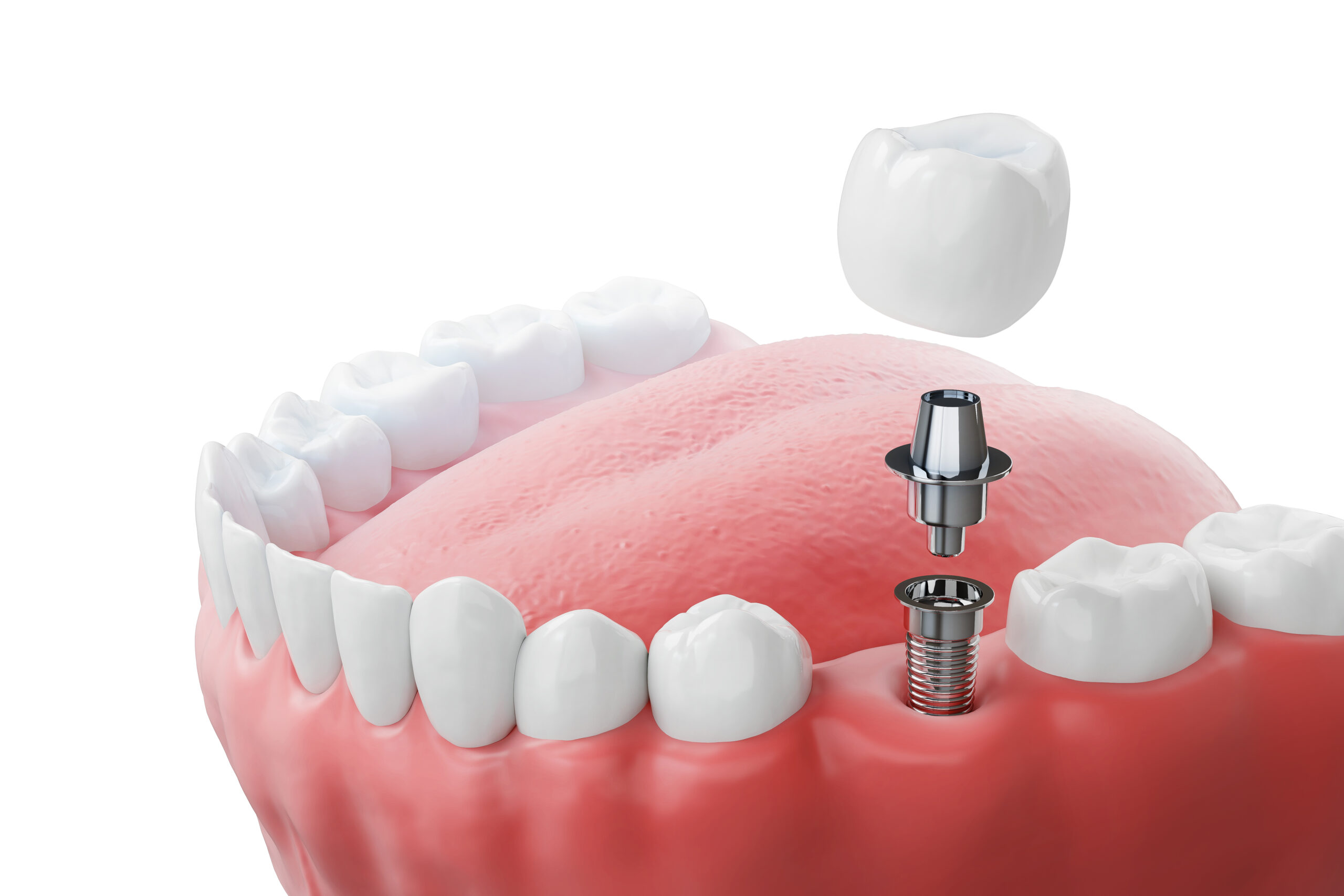Dental implants are a revolutionary solution for replacing missing teeth, but many people don’t realize that they consist of multiple components. One of the most crucial parts of a dental implant is the abutment—a small connector piece that plays a key role in securing the artificial tooth. Understanding how abutments for dental implants work can help you feel more confident about the implant process and what to expect.
In this guide, we’ll break down what abutments are, their purpose, types, and how they function as part of a complete dental implant system.
What Are Abutments for Dental Implants?
An abutment is a connector piece that attaches the dental implant post (which is embedded in the jawbone) to the visible crown, bridge, or denture. Once the implant post has fused with the bone through a process called osseointegration, the abutment is placed on top of the implant to provide a stable foundation for the final restoration.
Key Functions of an Abutment:
- Secures the artificial tooth to the implant post
- Creates a natural gumline appearance around the restoration
- Allows for easy attachment and maintenance of the prosthetic tooth
Without abutments, implants would not be able to properly support crowns, bridges, or dentures.
How Do Abutments for Dental Implants Work?
The placement of abutments for dental implants occurs after the implant post has successfully integrated with the jawbone. The process typically follows these steps:
- Implant Placement: The titanium implant post is surgically placed into the jawbone and given time to heal (usually 3-6 months).
- Abutment Placement: Once the implant is stable, a minor procedure is performed to attach the abutment. This requires reopening the gum tissue to expose the implant and secure the abutment in place.
- Healing and Gum Shaping: After the abutment is placed, the gum tissue needs time to heal and form around it naturally, which helps create a lifelike appearance.
- Final Restoration: Once healing is complete, a custom-made crown, bridge, or denture is attached to the abutment, completing the implant process.
Depending on the type of implant system used, some abutments are placed at the same time as the implant post, while others are attached after healing.
Types of Abutments for Dental Implants
There are several types of abutments for dental implants, each designed for specific needs and restoration types.
1. Standard Abutments
- The most commonly used abutments
- Pre-manufactured in standard sizes
- Ideal for single-tooth crowns and traditional implant restorations
2. Custom Abutments
- Designed specifically for each patient’s mouth
- Provides a better fit and more natural-looking gum contour
- Often used in highly visible areas, like the front teeth
3. Angled Abutments
- Used when an implant is placed at an angle
- Helps correct positioning for a natural bite and appearance
- Commonly used in All-on-4 implants and full-arch restorations
4. Healing Abutments
- Placed temporarily to help shape the gum tissue around the implant
- Ensures the final restoration looks more natural
- Removed before placing the permanent abutment
5. Multi-Unit Abutments
- Designed for implant-supported dentures and full-mouth restorations
- Allows multiple implants to support a full arch of teeth
- Commonly used in treatments like All-on-4 or All-on-6 dental implants
Choosing the right type of abutment depends on factors such as implant location, gum health, and the type of prosthetic being attached.
Cement-Retained vs. Screw-Retained Abutments
When attaching crowns or bridges to abutments, dentists typically use one of two methods:
- Cement-Retained Abutments – The artificial tooth is cemented onto the abutment, creating a seamless look. However, removal may require breaking the cement.
- Screw-Retained Abutments – A small screw is used to secure the crown, allowing for easy removal if maintenance is needed.
Screw-retained abutments are often preferred for full-arch restorations, while cement-retained abutments provide a more natural look for single-tooth implants.
How to Care for Abutments and Implant Restorations
Once your dental implant is fully restored, proper care is essential to maintain its longevity. Here’s how to keep your implant and abutment in top shape:
- Brush and floss daily around the implant to prevent plaque buildup
- Use a water flosser for hard-to-reach areas around multi-unit abutments
- Visit your dentist regularly for checkups and professional cleanings
- Avoid excessive force or grinding that could put stress on the abutment and crown
With proper care, abutments for dental implants can last a lifetime, ensuring a strong and stable foundation for your new smile.
Ready to Restore Your Smile with Dental Implants?
If you’re considering dental implants, understanding how abutments for dental implants work is an important step in the process. At New Smile Now, we specialize in advanced implant solutions, using high-quality abutments and restorations to ensure a natural, long-lasting result.
If you’re in the Chico, CA area, take the next step toward a confident, fully restored smile—schedule a consultation today at New Smile Now and discover the best implant options for you!




